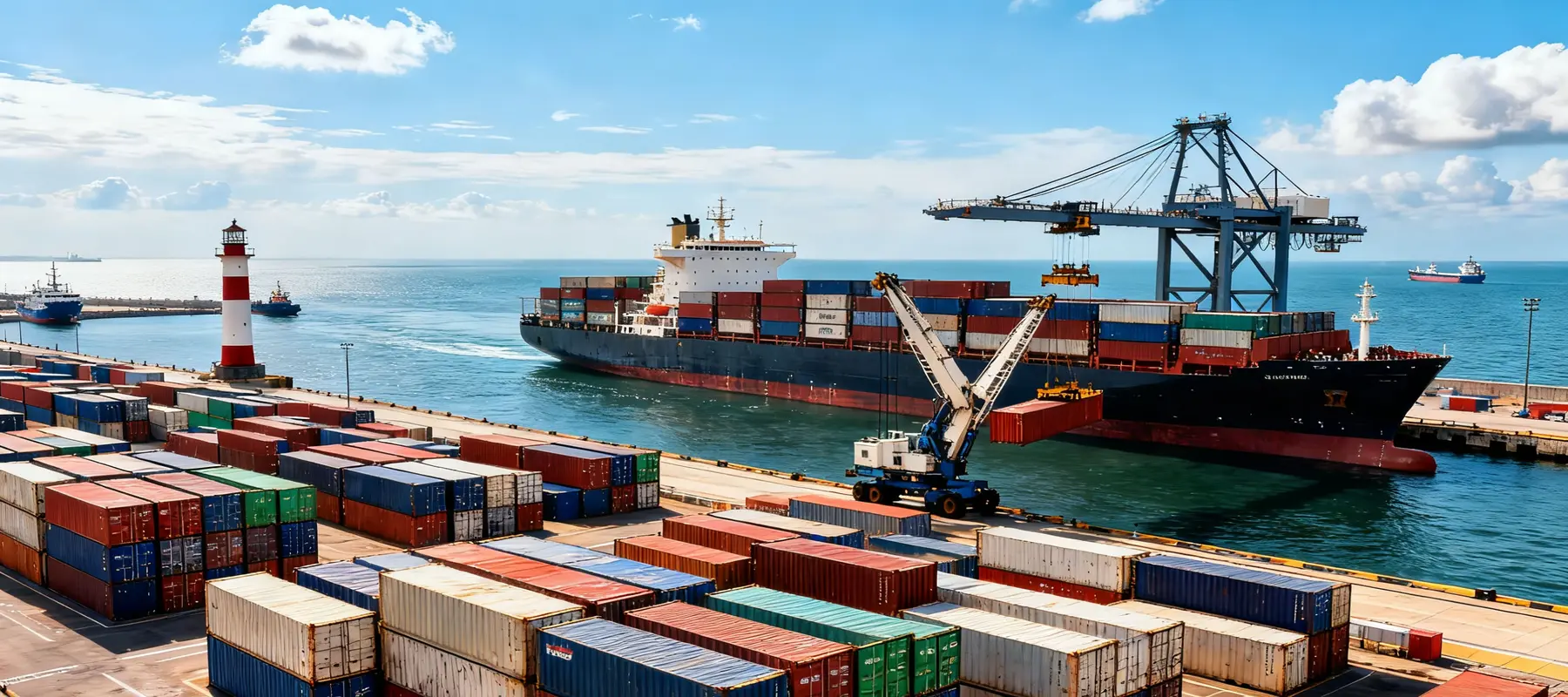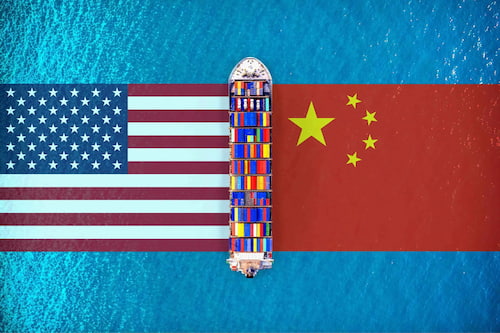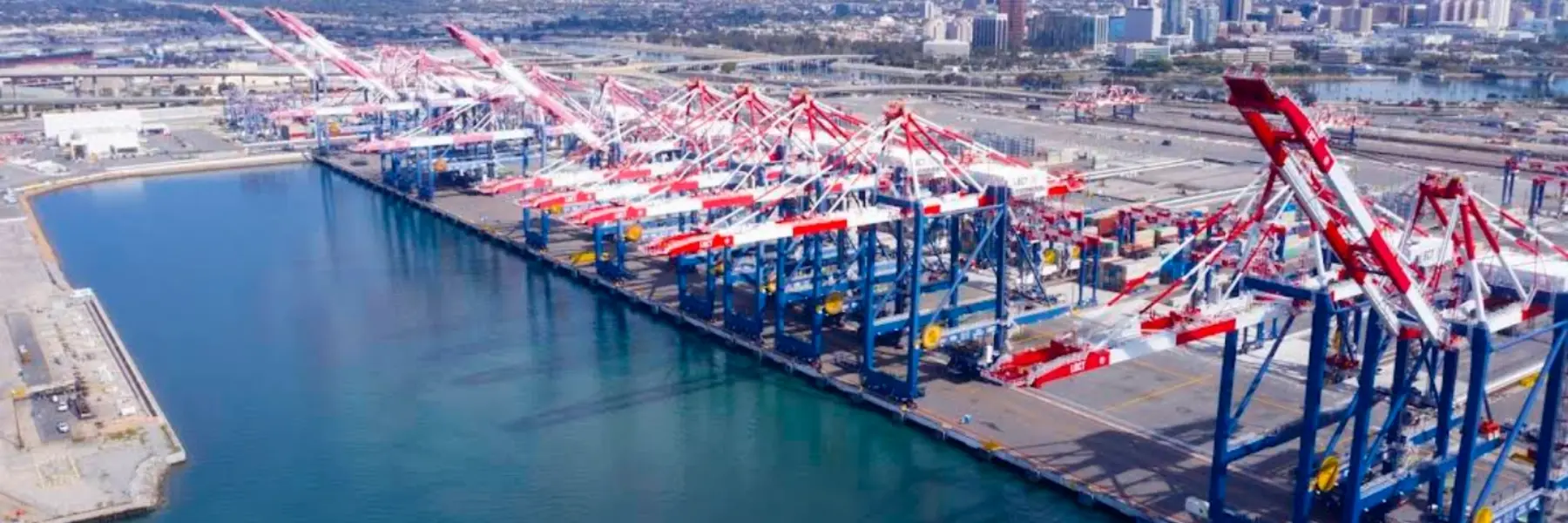
Shipping from China to Port Huron: Comprehensive Guide on Freight Costs, Sailing Schedules, Customs Clearance & Trusted China Freight Forwarder Services
Shipping from China to Port Huron is a critical logistics link for businesses in Michigan’s border and manufacturing hub—especially for Port Huron’s core industries: auto parts manufacturing, cross-border trade with Canada, agricultural machinery processing, and small-scale industrial equipment production. As a city on the St. Clair River (connecting Lake Huron to Lake St. Clair), Port Huron lacks direct international shipping routes, so most cargo relies on transshipment via major U.S. Great Lakes international seaports: the Port of Detroit (~60 miles southwest) and Port of Cleveland (~180 miles east). Partnering with a seasoned freight forwarder like WanHaoFreight forwarder is essential to navigate seamless transshipment, address cross-border logistics challenges, and mitigate winter weather delays. Whether you’re transporting bulk auto chassis parts, small-batch industrial tools, or urgent agricultural machinery components, understanding Ocean Freight (including Ocean FCL and Ocean LCL), Airfreight costs, sailing schedules, and destination port customs clearance is critical. This guide covers all essential details for shipping from China to Port Huron.
Ocean Freight Costs: Ocean FCL vs. Ocean LCL for Shipping from China to Port Huron
Ocean Freight is the most cost-effective choice for large-volume shipping from China to Port Huron, with nearly all cargo first arriving at the Port of Detroit or Port of Cleveland before being transported via truck (transit time: 1.5–3 hours to Port Huron) or rail. Two core Ocean Freight modes—Ocean FCL (Full Container Load) and Ocean LCL (Less than Container Load)—cater to different cargo sizes, with costs varying by origin port, transshipment fees, and seasonal demand (e.g., pre-auto production surges in February).
Ocean FCL Costs: For businesses shipping 20ft or 40ft containers (common for bulk auto transmission parts, agricultural harvesters, or large industrial lathes), Ocean FCL offers stability and lower per-unit rates. From major international seaports in China (Shanghai Port, Shenzhen Port, Ningbo Port), the cost of Ocean FCL to Port Huron (via Port of Detroit) typically ranges from 1,800 to 3,500 for a 20ft container and 2,500 to 4,800 for a 40ft high-cube (HC) container—including transshipment fees (220–380) and local drayage (150–280) to Port Huron. Prices fluctuate with fuel surcharges (bunker adjustments) and Great Lakes winter shipping restrictions (December–March, when ice limits port operations). WanHaoFreight forwarder, a leading China Freight forwarder, negotiates exclusive rates with carriers like Hapag-Lloyd and COSCO, plus priority transshipment at Port of Detroit, helping clients reduce Ocean FCL expenses. A key need for Port Huron’s auto sector is “affordable 40ft Ocean FCL shipping from China to Port Huron for auto chassis components,” as bulk precision parts benefit from FCL’s damage-free transit during cross-state transport.
Ocean LCL Costs: For smaller shipments (under 10 CBM, e.g., auto electrical sensors, industrial fasteners, or small agricultural tools), Ocean LCL is more economical—you only pay for the space your cargo occupies. The cost of Ocean LCL from China to Port Huron averages 35 to 62 per CBM, plus transshipment fees (65–130), drayage fees (50–110), handling fees (42–92), and documentation charges (30–72). For example, shipping 4 CBM of auto electronic control units from Guangzhou Port to Port Huron via Ocean LCL might cost 230–370 total. WanHaoFreight forwarder optimizes Ocean LCL by consolidating cargo at Chinese international seaports and coordinating same-day drayage from Port of Detroit, minimizing storage delays. Small auto suppliers in Port Huron often seek “reliable Ocean LCL shipping from China to Port Huron for small-batch auto electrical parts,” as it aligns with their just-in-time production needs for cross-border assembly lines.
Airfreight Costs for Urgent Shipping from China to Port Huron
When speed is critical (e.g., emergency auto repair parts, time-sensitive industrial machinery components, or last-minute cross-border trade goods), Airfreight is the ideal choice for shipping from China to Port Huron. Though more expensive than Ocean Freight, Airfreight delivers cargo in 3–6 days—far faster than the 24–38 days for Ocean Freight (including transshipment).
From major Chinese airports (Beijing Capital Airport, Shanghai Pudong Airport), Airfreight first flies to Detroit Metropolitan Airport (DTW, ~65 miles southwest of Port Huron) before being transported via regional couriers (transit time: 1–2 hours) to Port Huron. The total cost ranges from 3.30 to 7.80 per kg, including regional transit fees (0.35–0.95 per kg). For instance, shipping 55 kg of emergency auto engine sensors might cost 200–460 total. Factors impacting Airfreight prices include cargo weight (bulk discounts for 350+ kg), commodity type (hazardous industrial fluids incur surcharges), and peak auto production seasons (April–June). WanHaoFreight forwarder partners with airlines like Air China and United Airlines to offer discounted Airfreight rates for shipping from China to Port Huron. A top requirement for Port Huron’s cross-border trade sector is “fast Airfreight from China to Port Huron for urgent auto repair parts,” as it prevents costly downtime for Canadian assembly plants relying on Port Huron’s logistics hub.
Sailing Schedules for Ocean Freight from China to Port Huron
Sailing schedules are critical for inventory planning when shipping from China to Port Huron—especially for the auto and cross-border trade industries, which rely on tight supply chain timelines. Most cargo follows a two-step process: 1) Ocean Freight from China to Port of Detroit/Port of Cleveland; 2) Local drayage to Port Huron. Below are typical schedules from major Chinese international seaports:
1. Shanghai Port: Direct sailings to Port of Detroit run 2–3 times weekly, with a transit time of 23–29 days. Transshipment to Port Huron adds 1.5–3 hours. Indirect routes (via Port of New York) take 30–36 days but may cost 8–13% less.
2. Shenzhen Port: Direct voyages to Port of Cleveland depart 1–2 times weekly, with a transit time of 25–31 days. Transshipment to Port Huron adds 3–4 hours. Indirect sailings (via Port of Baltimore) take 32–38 days.
3. Ningbo Port: Weekly direct sailings to Port of Detroit take 24–30 days, while indirect routes (via Port of Philadelphia) take 31–37 days (plus 2–3 hours transshipment to Port Huron).
WanHaoFreight forwarder provides real-time sailing schedule updates and winter ice alerts for Great Lakes ports, helping clients adjust timelines to avoid delays. Auto parts manufacturers shipping via Ocean Freight from Shenzhen to Port Huron often rely on “up-to-date sailing schedules for Ocean Freight from Shenzhen to Port Huron for spring auto production parts” to align with cross-border assembly deadlines.
Port Huron Destination Port Customs Clearance Tips
Smooth customs clearance avoids delays and extra fees when shipping from China to Port Huron—especially critical for cross-border trade goods and time-sensitive auto parts. The U.S. Customs and Border Protection (CBP) enforces strict regulations for industrial and auto cargo, including inspections for counterfeit auto parts, compliance checks for cross-border trade documentation, and USDA reviews for agricultural machinery. Working with an experienced freight forwarder like WanHaoFreight forwarder ensures compliance.
Required Documents:
1. Commercial Invoice (with detailed cargo descriptions, HS codes, and declared values—critical for auto parts and cross-border trade goods)
2. Packing List (itemized by weight, quantity, and dimensions, including serial numbers for industrial equipment)
3. Bill of Lading (BOL) for Ocean Freight or Air Waybill (AWB) for Airfreight (including transshipment details from Detroit/Cleveland)
4. Certificate of Origin (to qualify for trade agreements like USMCA, reducing tariff costs for cross-border auto parts)
5. Special Permits (e.g., DOT approval for auto safety components, USDA clearance for agricultural machinery, NAFTA documentation for cross-border trade)
Tariff Considerations: U.S. tariffs on Chinese goods vary by category—for example, 3–15% for auto electrical parts, 4–17% for industrial machinery, and 2–14% for agricultural tools. WanHaoFreight forwarder helps clients classify cargo accurately to avoid overpaying; misclassifying USMCA-eligible auto parts, for instance, could lead to missed tariff savings or penalties.
Common Delays: Incomplete cross-border trade documentation, missing DOT certifications for auto parts, or under-declared value for industrial equipment are top issues. To mitigate risks, share full cargo details (including cross-border delivery addresses) with your China Freight forwarder early. Auto electrical parts suppliers using Ocean LCL often need “customs clearance support for Ocean LCL shipping from China to Port Huron for auto electronic sensors” to avoid shipment hold-ups at the U.S.-Canada border.
Why Choose WanHaoFreight forwarder for Shipping from China to Port Huron?
As a trusted freight forwarder, WanHaoFreight offers end-to-end solutions tailored to Port Huron’s border and manufacturing needs:
1. Competitive rates for Ocean FCL, Ocean LCL, and Airfreight, including discounted transshipment via Port of Detroit/Cleveland
2. Access to 17+ international seaports and airports across China, plus partnerships with Michigan carriers specializing in cross-border logistics
3. Expert customs clearance support for Port Huron-specific regulations (e.g., DOT auto part checks, USMCA cross-border documentation)
4. Real-time tracking for both Ocean Freight and local delivery, including cross-border transit updates
5. 24/7 customer service specialized in Great Lakes logistics, with quick responses to winter ice delays or border clearance issues
6. Customized plans, such as anti-vibration packaging for auto parts or expedited Airfreight for cross-border emergency orders
To Get A Quote for your shipping from China to Port Huron, visit WanHaoFreight’s website or contact their team via email/phone. Whether you need Ocean Freight for bulk auto chassis parts or Airfreight for urgent cross-border goods, WanHaoFreight forwarder guarantees safe, on-time delivery that aligns with Port Huron’s industry standards.
In conclusion, shipping from China to Port Huron requires careful planning of transshipment, freight mode, and customs compliance—especially given its border location and reliance on Great Lakes ports. By leveraging Ocean FCL/LCL or Airfreight, understanding sailing schedules, and partnering with WanHaoFreight forwarder, businesses can optimize their logistics and avoid costly delays. Don’t delay—Get A Quote today to start your seamless shipping journey from China to Port Huron.
 Easy Shipping From Global, Save Cost
Easy Shipping From Global, Save Cost














